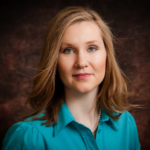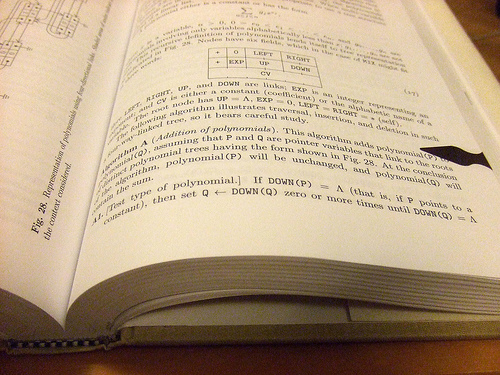Days before the Obama administration pushed for connecting every child to an e-textbook by 2017, Utah officials announced plans to release statewide open-source, digital textbooks this coming fall.
Going digital ultimately will reduce the state’s average public school textbook price from $80 to $4, said David Wiley, a Brigham Young University professor who is conducting an open-textbook pilot program. Panels of Utah teachers and professors will develop the e-books, using the CK-12 Foundation‘s open-source, or non-copyrighted, textbooks as base material for 6-12th grade math, science, and language arts.
“We see [online textbooks] bringing everything the Internet can into that learning environment,” said Diana Suddreth, science, technology, engineering, and math coordinator for Utah’s Office of Education (OOE).
The digital revolution that hit the music and newspaper industries in the past decade has reached publishing. In 2011, Amazon.com announced its digital books outsold hard copies for the first time. Electronic textbooks generated approximately $267 million in sales in 2011, a 44 percent increase over 2010. Digital textbooks will provide 11 percent of textbook revenue by the end of 2012, estimates the publishing research firm Simbia Information.
Testing Open-Source in Utah
Wiley said he is consulting with several states interested in e-textbooks. This is the second year of his science e-textbook pilot, involving 22 Utah teachers and approximately 2,700 high school students.
He’s about to publish his findings, which indicate there’s no difference in student academic outcomes between hard-copy textbooks from mainstream publishers and open-source textbooks from CK-12. He acknowledges that may mean both are equally mediocre, but he notes e-textbooks’ far lower cost involves no quality decline.
“If [schools in] the state do this and bank the money they save, districts can give all students a digital device rather than depending on a grant or a one-time infusion of money,” Wiley noted. Hewlett Foundation grants have sponsored Wiley’s related work, and the OOE is funding initial textbook development, expecting significant long-term savings for itself and state schools.
Digital Logistics
Utah’s e-textbooks will be free online. The $4 covers printing costs for students who do not have computers at home. The digital books will incorporate video, audio, and interactive material such as quizzes. Individual teachers and school districts will be able to edit the textbooks to develop personalized versions.
“It’s a matter of getting our groups together, involving a large number of educators, sifting through what’s good through a writing group that will pull it all together,” Suddreth said.
Later this spring the OOE will invite Utah public schools to informational meetings to prepare for statewide implementation.
Subsidizing the Textbook Market
The increasing availability of digital textbooks raises questions about textbook subsidies, prospects for decentralizing the education industry, and content.
“The [textbook] market is fundamentally broken,” Wiley said. “The person who chooses the book is not the person who has to pay for the book … and [college] textbook prices are counted for in federal and state loan programs. It’s like healthcare: As long as someone else is going to cover the cost, hospitals can just keep raising the cost. Federal and state aid subsidizes growing, out-of-control textbook costs.”
The biggest publishers in the world are education publishers—it’s a $10 billion annual industry. Three companies form nearly 80 percent of the market. The top-grossing media companies all own lucrative education divisions that earn far more than trade presses such as Random House. Most also own testing divisions like the SAT and National Assessment of Educational Progress, and flagship news companies such as The Economist and the Washington Post.
Digital publishing may undercut these companies’ bottom lines by allowing states to mimic Utah and providing a wedge for smaller publishers to enter the market. However, e-textbooks offer publishers an additional source of revenue because they typically offer a one-year license, whereas hard-copy textbooks may serve classrooms for eight years or more.
Centralized Market
Dominant education publishers amass so much money partly because public school textbook markets are highly centralized. California and Texas are the country’s two biggest markets, and most publishers aim material to pass their authorization processes, said Neal Frey, president of Educational Research Analysts. ERA is a three-person team that sifts public school textbooks full-time and routinely discovers factual errors and politically charged or lopsided material, such as giving more space to Marilyn Monroe than George Washington.
“You can find a ham sandwich in conformity with your state standards, depending on who’s doing the judging,” Frey said, chuckling.
He said a proliferation of new materials means parents and citizens who want to know what children learn in school will have to pay greater attention rather than relying on a statewide public selection process to weed out poor content.
Learning: Hard Work
Analysts such as Michael Horn of the Innosight Institute highlight the ability of new education technology to raise the level of teaching and content available to students in failing or mediocre schools. Others, however, remind policymakers technology is not an education cure-all.
“There are some basic elements of learning: concentration, hard work, the willingness to sit down and apply yourself mentally, and there are no shortcuts,” said Manhattan Institute Fellow Heather Mac Donald. “Having an interactive screen or keyboard does not substitute for those skills. If that were the problem, we wouldn’t have been able to educate people for the last two millennia.”
Image by Helen Cook.
David Wiley speaks about open content in education at TED:





